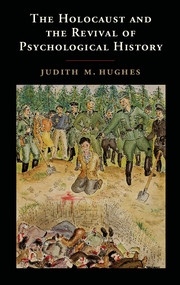2 - Nazi Germany and the Jews
Published online by Cambridge University Press: 18 December 2014
Summary
In Ian Kershaw’s biography, ideology – Hitler’s anti-Semitism – moved once again to center stage. (That academics should ever have consigned it to the wings has struck the interested public as puzzling and/or incredible.) In recent years, historians have joined Kershaw in making good decades of neglect – and no book has done more to prompt this return of the repressed than Daniel Jonah Goldhagen’s Hitler’s Willing Executioners. Then, in 1997, Saul Friedländer published the first volume of his Nazi Germany and the Jews.
Both men, though of different generations – Goldhagen was born in 1959, Friedländer in 1932 – were shaped by the events they studied: the American Goldhagen as the son of a Romanian-Jewish survivor and scholar of the Holocaust, the Czech-born Friedländer as a child sheltered in a French Catholic boarding school whose parents were murdered in Auschwitz. Neither author took a degree in history. Goldhagen’s book grew out of his doctoral dissertation in political science; he abandoned an academic career when he failed to get tenure at Harvard. Friedländer’s professional progress included stints in Israel and service in its army, a Ph.D. from the Graduate Institute of International Studies in Geneva, followed by a position on the faculty, along with teaching posts in Jerusalem and Tel Aviv. Then in 1988 he joined UCLA’s department of history.
- Type
- Chapter
- Information
- The Holocaust and the Revival of Psychological History , pp. 38 - 74Publisher: Cambridge University PressPrint publication year: 2014



